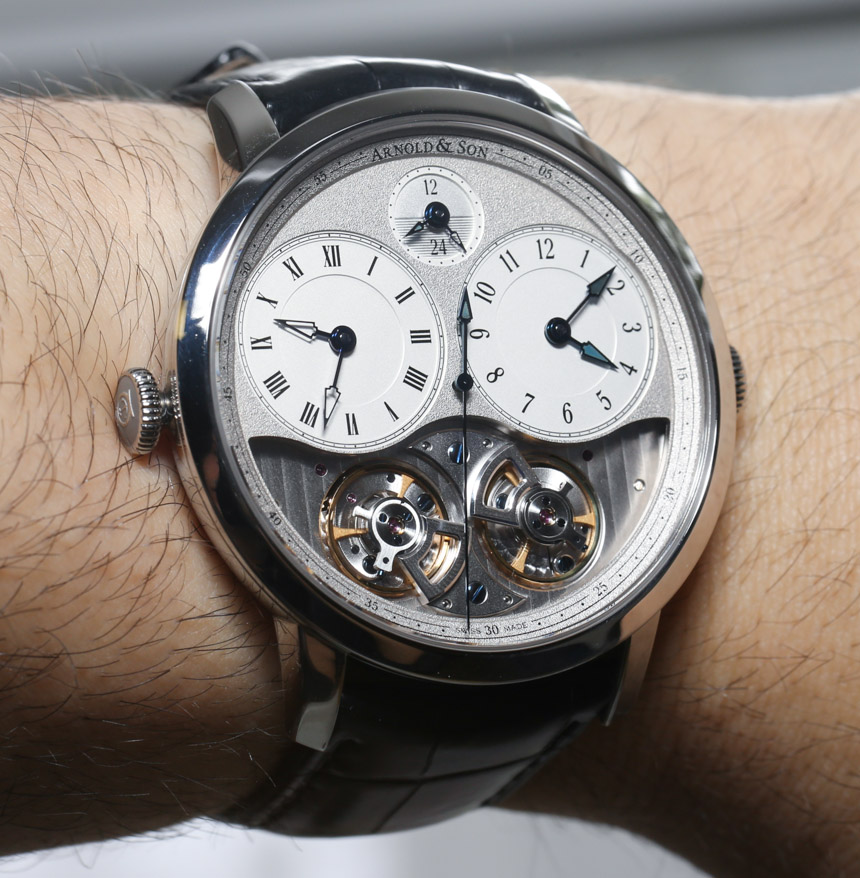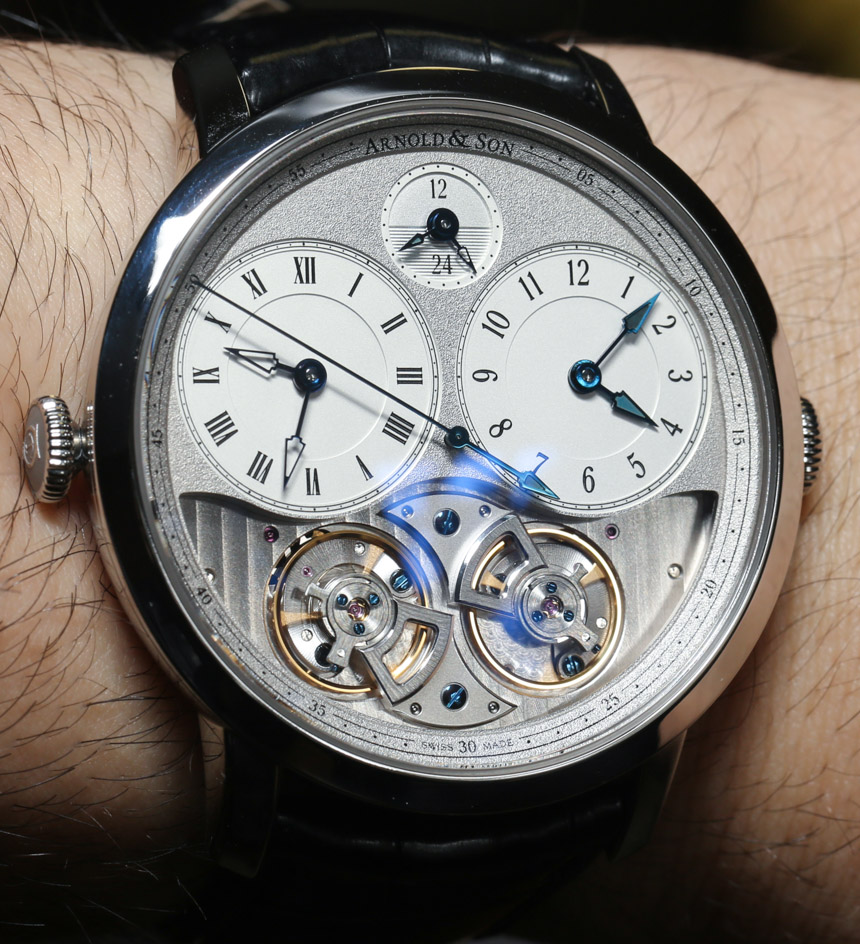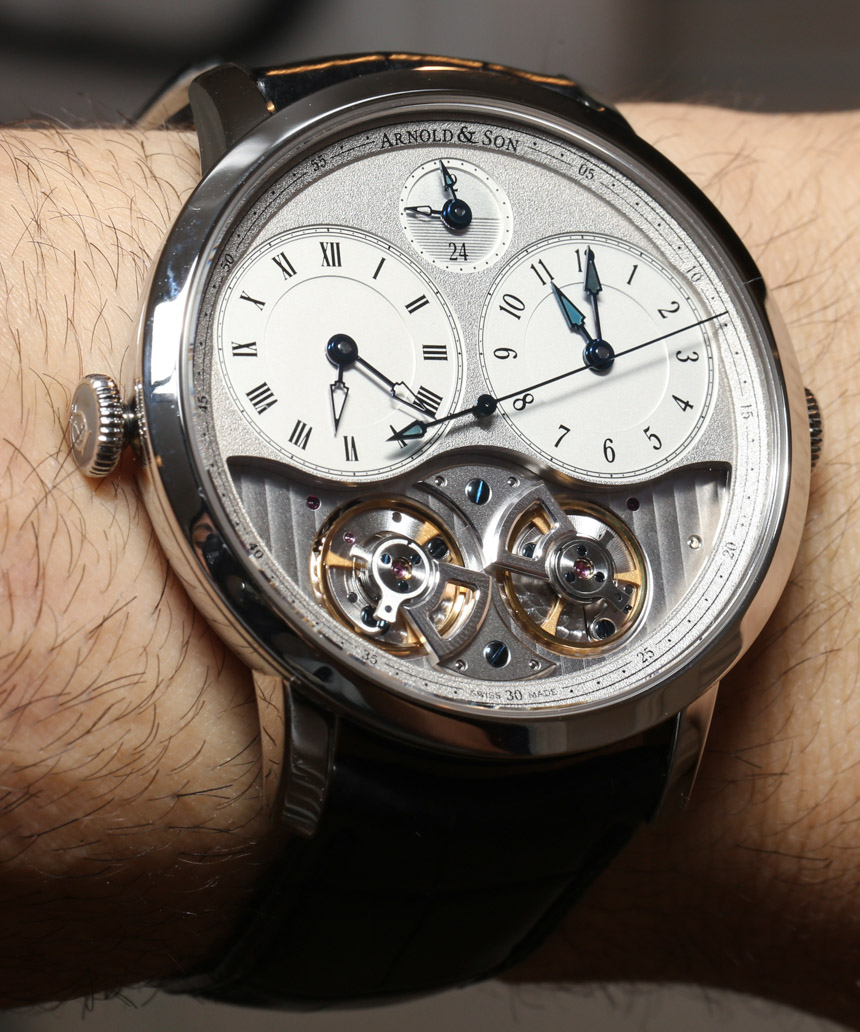
Perhaps you’ve noticed that over that last few years Arnold & Son has seriously become one of the top classic, yet avant garde watch brands to keep a close eye on. This demographic consists of brands such as Breguet, F.P. Journe, Jaeger-LeCoultre, and others. While each of these brands is distinct, they offer products which share a common theme: to represent the best of horological history in a contemporary and interesting manner suitable for demanding, high-end watch lovers. This brings us to a review of a watch I ended up being very pleased with, the Arnold & Son DBG that was originally released in 2012.
aBlogtoWatch first covered the DBG and sister watch the DBS here. The collection was a bit of surprise release, but that isn’t saying much as lately, many of Arnold & Son’s best timepieces are truly surprising and cool. Of course it is a difficult momentum to maintain, but for now we are very happy with what Arnold & Son has been presenting. In the same year Arnold & Son released both the DBG and DBS, two almost identical timepieces marked by a small functional difference. “DB” stands for “double balance.” The DBS is the “Double Balance Sidereal Time” while the DBG is the “Double Balance GMT.” The former watch has the local time and the solar (sidereal) time, and while the more practical DBG is more useful with having two timezones – one on each dial.
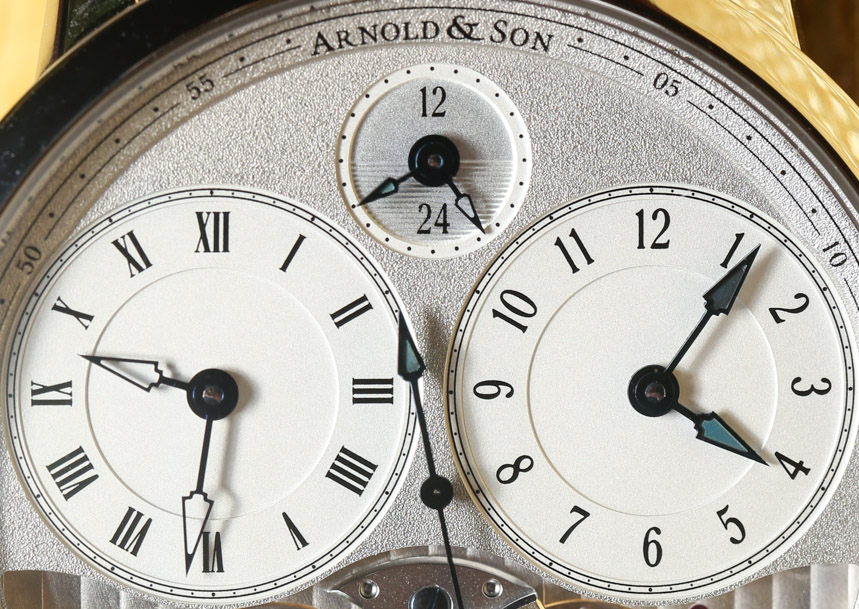
Why would you want a watch with “civil” time and solar time as displayed on the DBS? I still don’t really know. There are perhaps a few people out there who might prefer that model. For the rest of us I think that the DBG is much more appealing watch given that each dial on the display can be used. It makes for an excellent travel watch. The main dial contains two dials, each with a unique design so that you don’t confuse them, a larger central seconds hand that they share, and a small dial with two hands that operate as AM/PM indicators for the two time zones. The lower part of the main dial exposes part of the movement and offers a view of the double balance wheels. This my friends is a dial so very much worth looking at. In fact I found myself starting at it and forgetting to check the time… which was why I looked at the piece in the first place.
Inside the watch is the Arnold & Son caliber A&S1209 manually wound movement. It is quite thin at just 3.9mm thick, and has a power reserve of 40 hours running at 3Hz. What you need to know about the architecture of the A&S1209 is that it is essentially two movements in one that share a winding system. The two dials each have their own independent gear train. The rear of the movement allows you to understand this, as its symmetrical design helps highlight the fact that the single movement is essentially a marriage of two. What this means for setting the time is that each is completely independently set. There is a crown on either side of the DBG that allows you to set each time in whatever way you choose. Most dual timezone watches allow you to set the hours of each time, but the minutes are shared. In this case you can set each to whatever time you like. The AM/PM indicator as represented by a synchronized 24 hour dial is useful so that you now whether it is day or night in the other time zone.
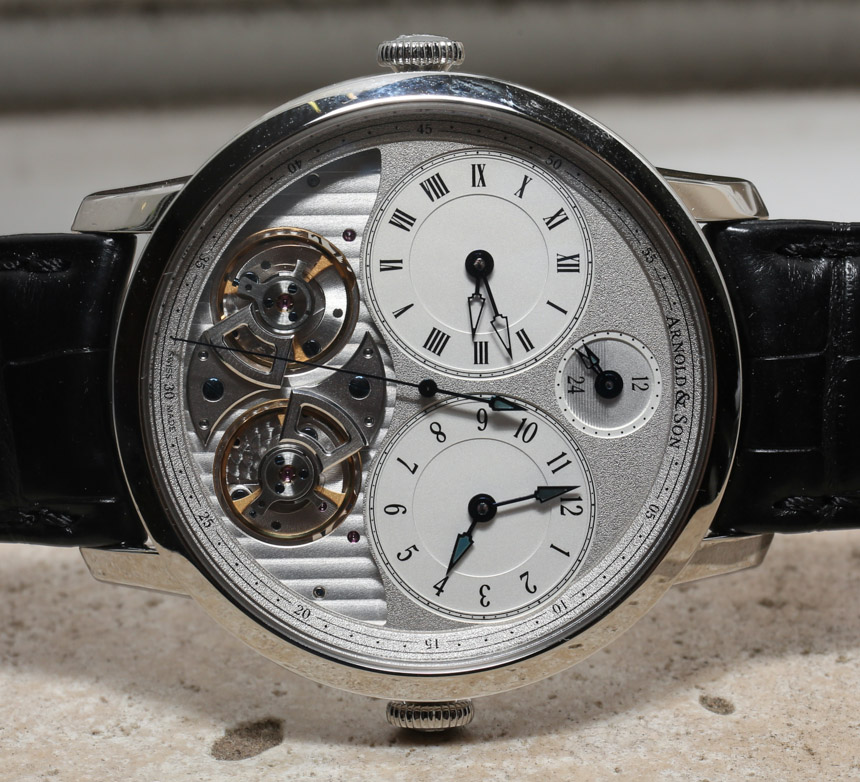
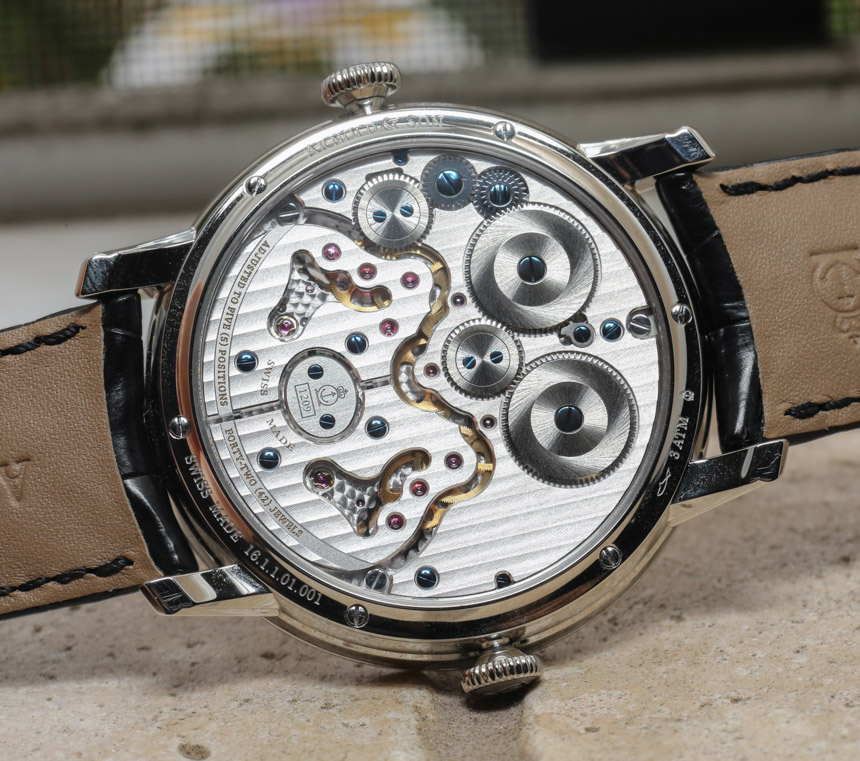
I suspect that the large running seconds hand is actually only linked to one of the gear trains, but essentially operates as an indicator for them both. I am usually not happy with watches that have two main subdials to offer different timezone as I find many of them to look ugly. For example I am not a big fan of the oblong cases with dual dials produced by Philip Stein. Just not my thing. However, watches like this are done very well. The trick is in making each of the distinct time dials very legible, but also offering useful ways of filling up the rest of the face. The beautiful symmetry, assortment of textures and finishes, and well as other features on the dial of the DBG make this a winning design in my opinion.
It is true that in certain ways the DBG design has hallmarks of the Jaeger-LeCoultre Duometre collection of watches. We’ve heard people mention this at least a few times. Both have two large sub dials and some versions of the Duometre have exposed areas on the lower part of the dials. However, when it comes down to it, these collections from the different brands are vastly distinct. Most Duometre watches don’t even use both dials to indicate the time, and use their dials to include a host of other features not related to showing two time zones. So while there is some cursory similarities between the two collections, these is little that is similar about them from a functional perspective. We simply felt that was worth mentioning for anyone who felt confused.
